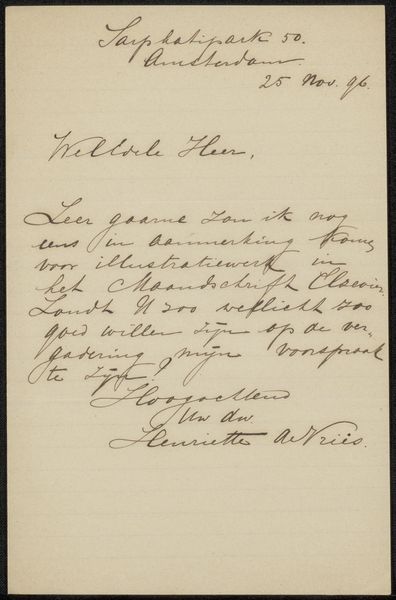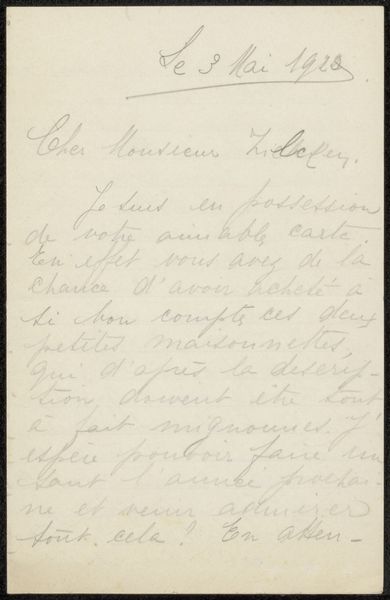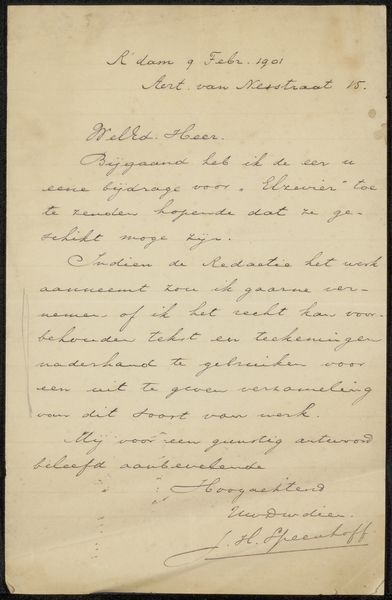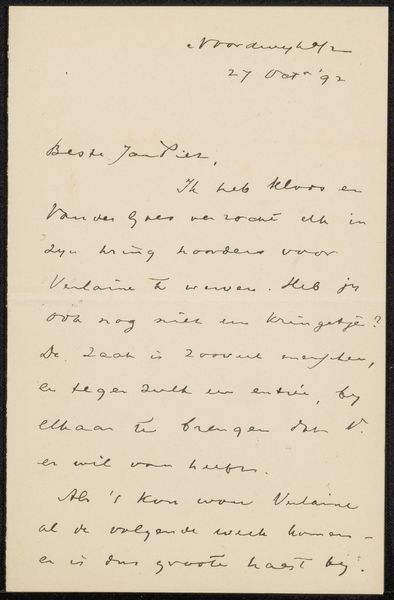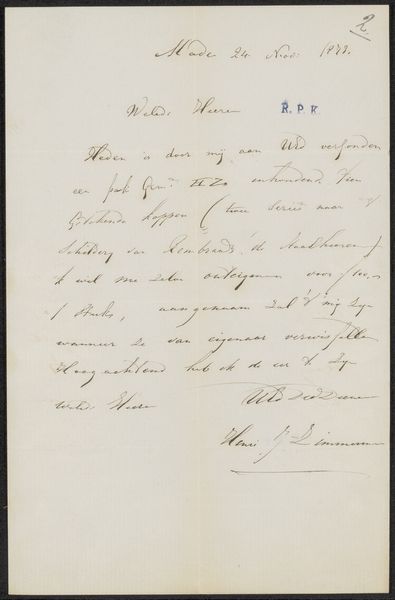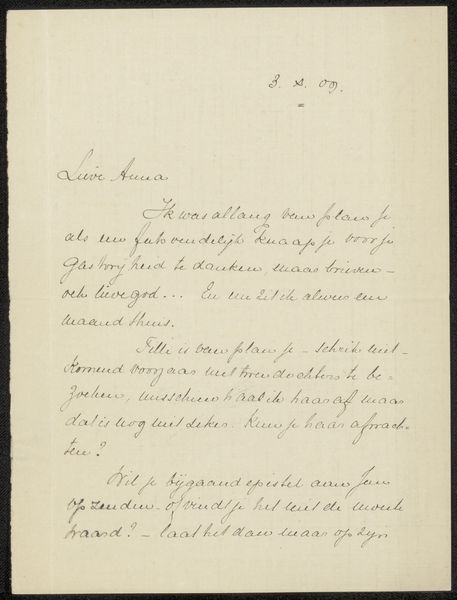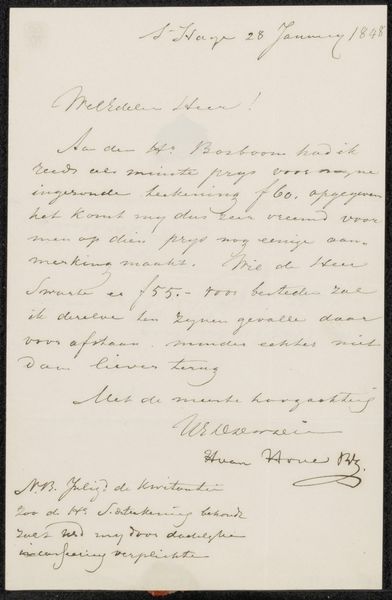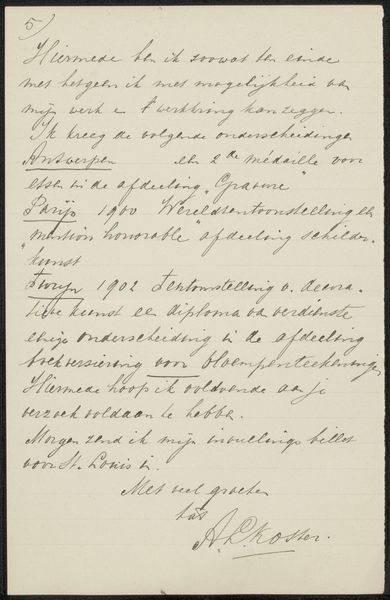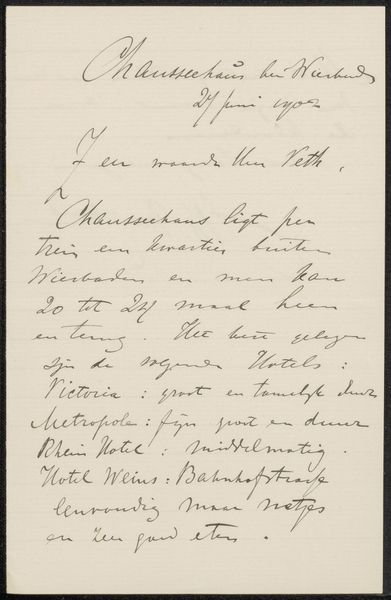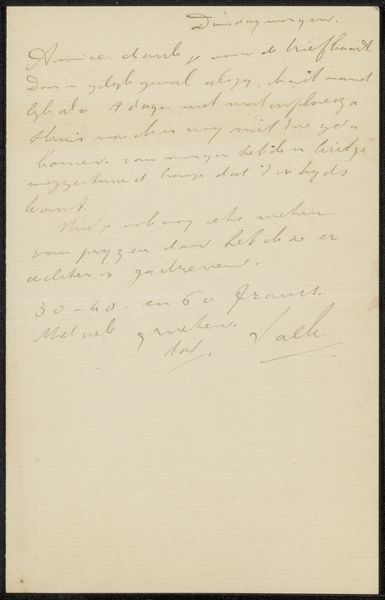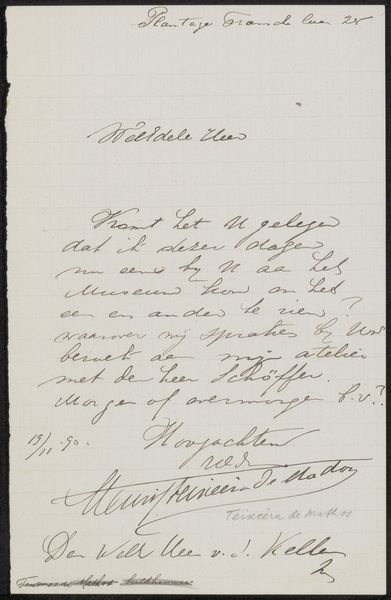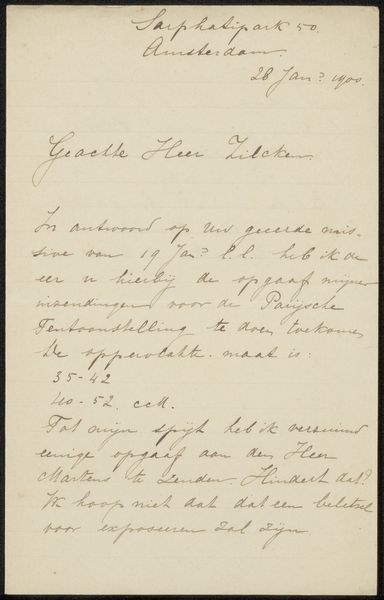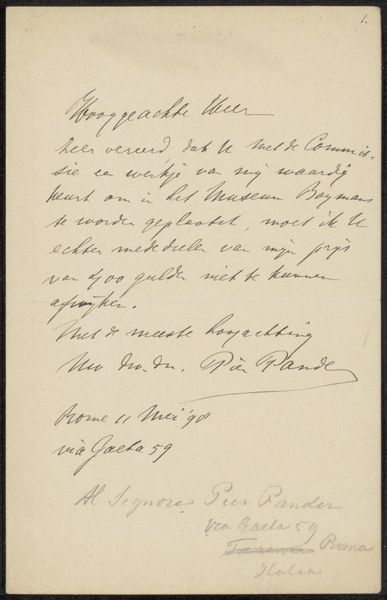
drawing, paper, ink
#
drawing
#
paper
#
ink
#
calligraphy
Copyright: Rijks Museum: Open Domain
Curator: We're looking at "Brief aan Philip Zilcken," or "Letter to Philip Zilcken," a drawing made with ink on paper by Henriëtte de Vries, likely between 1896 and 1898. Editor: It’s interesting to consider a piece like this in an audio guide. My first thought is how immediate it feels—there's something about handwriting that really collapses the distance between us and the past. Curator: Absolutely. The letter gives us insight into the networks of artists and writers at the time. Philip Zilcken was, of course, an artist and critic. Editor: A powerful gatekeeper in the art world. So, this letter, though seemingly personal, operates within a professional sphere. The script is incredibly precise and almost performative, yet very inviting. It would be revealing to uncover some more. Curator: De Vries mentions sending drawings to accompany a story titled "'t Heikhuis" which she hopes will be placed in the Elsevier’s Maandschrift. Elsevier was, and is, a prestigious Dutch publisher. The piece illuminates the collaborative nature of artistic production and the significance of magazines in disseminating art and literature. Editor: You can't escape the politics inherent in what gets published and what doesn’t. The power dynamic between De Vries, a woman artist, and Zilcken is palpable—knowing how much a positive reception from a figure like Zilcken might have impacted her trajectory is something we can imagine. The labor involved in producing the illustrations is very physical in the presentation of the text and ink; It makes one aware of all the work and resources of this piece as evidence of creative practices in its specific cultural moment. Curator: Her style is evocative of the Symbolist aesthetic, reflecting a move towards introspection and subjective experience which speaks of a broader movement of pushing boundaries for women at this time, but of course with so much more road still needed in the 1890s and still needing movement and adjustment today. Editor: I agree. It is valuable when thinking about the construction of meaning and considering the nuances of human connection and labor beyond canonical narratives in Dutch art history, especially with the rise of different kinds of movements and gender relations still needing reform today. Curator: Seeing such private communications reframes what we might call major and minor art historical objects or works, reminding us of all the invisible threads linking people and things. Editor: Yes, something simple as the history of correspondence unveils power structures that influence both artistic expression and artistic careers, thus offering tools and a map to challenge it.
Comments
No comments
Be the first to comment and join the conversation on the ultimate creative platform.
